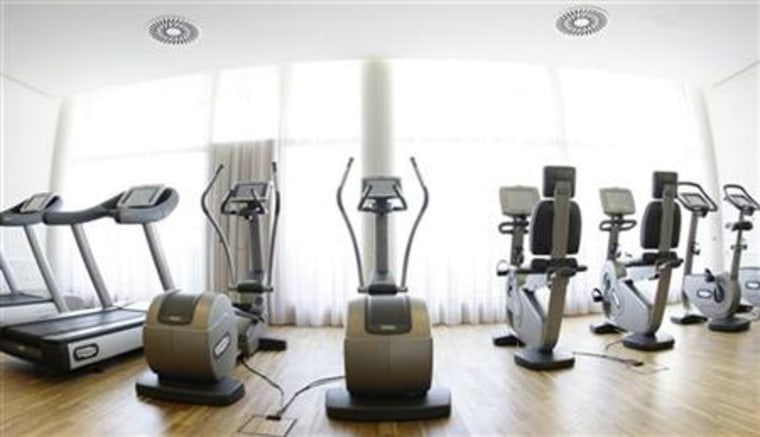In the battle of the cardio machines the treadmill reigns supreme, but the elliptical cross trainer could be a contender.
Experts say treadmills give your workout the extra oomph of a motor, while ellipticals promise a smoother ride, and both have their champions.
"Both have advantages and disadvantages," said Dr. Henry Williford of the American College of Sports Medicine (ACSM). "Treadmills are more stimulating for running, while ellipticals are non-impact, if you don't want to jar."
Williford, a physical education and exercise science professor at Auburn University in Montgomery, Alabama, said as a runner he favors the treadmill.
"If you're training to do a 5K (run), obviously the treadmill is the preferred mode of exercise because it's similar," he said. "But my brother has arthritis. He can't run but he can exercise on an elliptical because there's no impact. You're not picking your body up and down."
In terms of popularity, treadmills rule. They accounted for 56 per cent of all fitness sales in 2009, according to the latest National Sporting Goods Association report. Ellipticals were a distant second at 8.4 percent.
Story: Tylenol, Advil can put runners in a world of hurt
But they're gaining. Ellipticals posted a 27 percent growth in sales in 2007.
One reason may be the so-called "silver tsunami" of 78 million baby boomers, the oldest of whom turn 65 on January 1.
The elliptical user glides rather than pounds, and that can mean a kinder, gentler workout for boomers' aging muscles and joints.
"You've got to keep up with a treadmill or you'll come off the back of it," Williford explained. "Whatever speed you set you've got to keep up pace. With an elliptical you can rest or slow down."
'Feel-good machines'
That's just the problem for fitness expert Melanie Douglass.
"I call ellipticals feel-good machines because it's really easy to get on and ho-hum your workout," said Douglass, who is based in Salt Lake City, Utah.
"The motor of a treadmill drags you to work a tad out of your comfort zone," she said, while the elliptical runs on momentum only. "I consistently see clients work harder on the treadmill."
Story: For good sleep, don't count sheep -- run!
Dr. Angela Smith, an orthopedic surgeon in Philadelphia, Pennsylvania, disagrees.
"You can make a very hard workout on an elliptical," Smith said, adding it has the added advantage of cross-training.
"If you can have one piece of equipment at home, you're better off with an elliptical because it uses the upper and lower body," said Smith, who is also a competitive skater.
"On the treadmill, you can multitask," she said, "but you shouldn't be multitasking if you want to get the most out of the program."
She said the elliptical positions the user to exercise more mindfully because the hand placements encourage a better posture.
Story: Your muffin top may kill you
"You want to perform the exercise with good form, with the body lifted rather than slumped, using muscles in optimum way," Smith explained.
"If the best way to get your 10,000 steps in is while you're on a conference call, get a treadmill and use it," she said. "It's better than nothing but it's not a full gym-sized workout."
Whether you're a treadmill loyalist or an elliptical enthusiast, the American Heart Association/ACSM guidelines call for 30 minutes of moderately intense cardio a day, five days a week, or 20 minutes of vigorously intense cardio for 20 minutes a day, three days a week.
